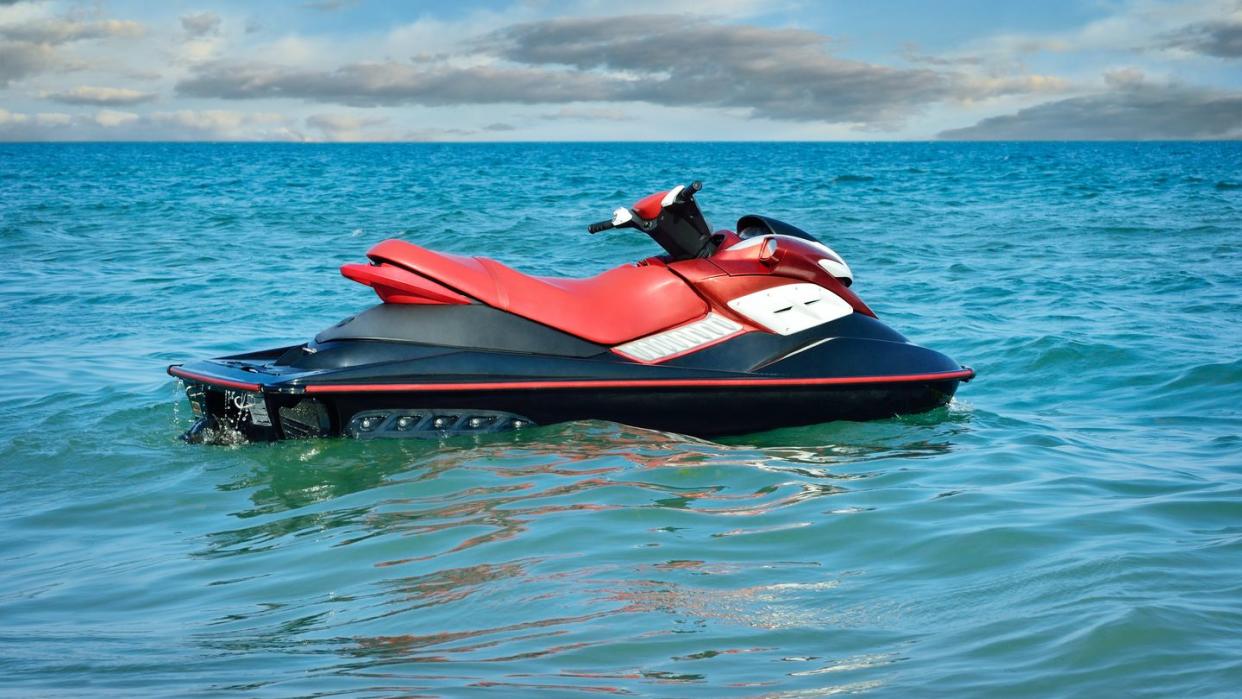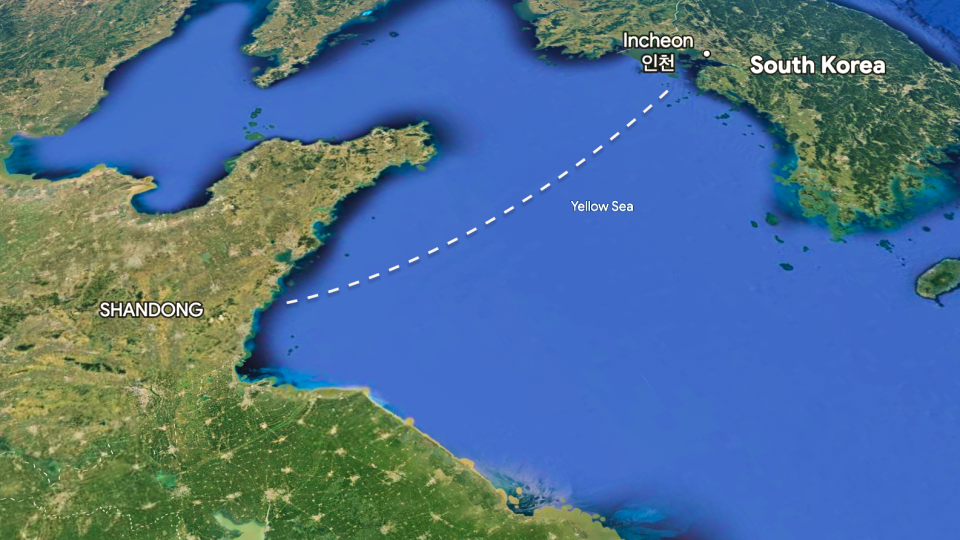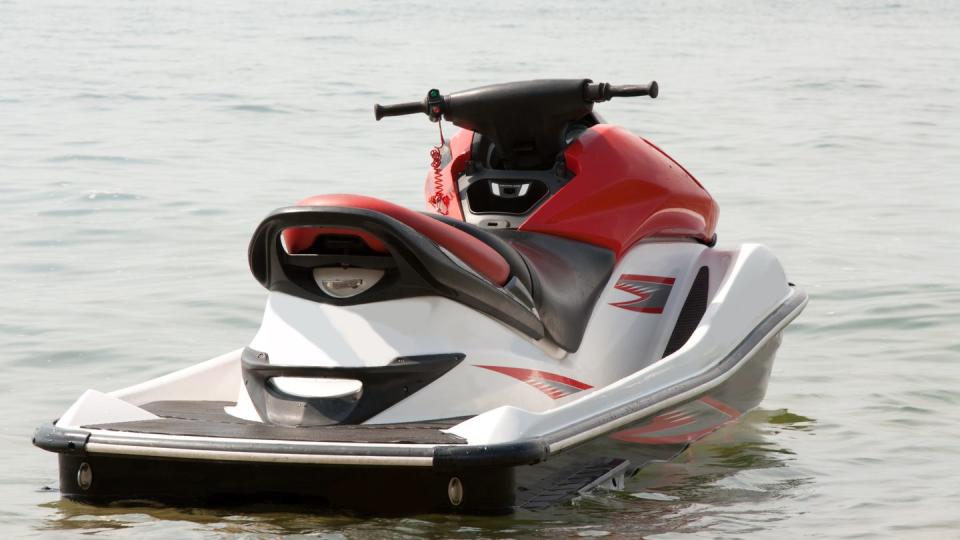A Chinese Dissident Jet-Skied 186 Miles to Asylum. Here’s How Much Fuel It Took

In South Korea, officials with the local Coast Guard pulled a jet-ski rider from the sandy island coast where he had beached his personal watercraft. That man turned out to be Kwon Pyong, a noted and persecuted political dissident from China. He had escaped via jet ski from Shandong, a province in east central China that’s a mere 200 miles from South Korea across the Yellow Sea. Officials said Kwon had traveled 186 miles on his jet ski, towing extra fuel in barrels behind it. News organizations have reported on Kwon’s record as a dissident in the People’s Republic of China, as well as his imprisonment and surveillance there. He will likely seek asylum in South Korea.
But what about the jet ski? How far is a 186-mile trip for a personal watercraft like this? How would it fare on open waters, 90 miles from the nearest mainland? And how much gas would you need to complete the trip across the Yellow Sea?
Types of Jet Skis
“Jet ski” is a term that once referred only to a specific name brand. The Jet Ski brand belongs to the Japanese company, Kawasaki, the same one that makes motorcycles, dirt bikes, and ATVs. At first, Jet Ski personal watercraft let the rider stand, with a steering column that you could lift into a more upright position. That contrasted with WaveRunner, the Yamaha brand of personal watercraft; users were seated on these craft, and the steering column did not move. Today, Jet Ski, WaveRunner, and other manufacturers like Sea-Doo all offer seated options. Both terms persist as proprietary eponyms, like kleenex, xerox, and band-aid.
Suspected Chinese dissident makes 186 mile jet ski ride to South Korea
A prominent Chinese dissident who traveled almost 200 miles across the sea to flee China, has been detained in South Korea.#China #SouthKorea pic.twitter.com/mnABHPX84Z— Spotlight on China (@spotlightoncn) August 25, 2023
It’s not clear from press photos what make or model the jet ski is that Kwon used, but it appears to be an older watercraft. Jet skis get between 80 and 140 miles per tank of gas, estimates Jet Ski Tips, an informational website run by jet-ski enthusiasts, though the industry does not make any mileage figures public like vehicle manufacturers must. Today’s Jet Ski models have 20-gallon fuel tanks, and a supercharged Sea-Doo from 2003 had a capacity of about 16 gallons. That older model could carry an additional 600 pounds over its own weight of 900 pounds. It also had a hitch to attach a skier or tuber, so it could certainly have pulled some amount of extra fuel in barrels.
How Much Fuel Would It Take to Cross the Yellow Sea by Jet Ski?
Traveling in a straight line toward a faraway destination, over open seas, is very different from making figure-8s in a small area near the shore or even on an inland lake or river. Kwon would need at least one fresh supply of fuel for his trip, and might even need two, depending on how he was driving and what he was carrying.
✅ Here’s a list of the many factors that affect fuel consumption, according to Jet Ski Tips:
• Temperature (of both water and air)
• Water conditions
• Wind direction and speed
• Type of water (saltwater is denser, and therefore slower to move through, than freshwater)
• Humidity (more humid air is “thicker,” and therefore, slower)
• Riding style (the rider’s position, and also how aggressively they ride, will affect the fuel efficiency)
• Condition of the personal watercraft
• Weight of rider
• Extra cargo
• Large cargo and size of rider affecting aerodynamics
• Speed
I would also speculate, based on how fuel consumption works in land vehicles, that the age of the vehicle’s motor makes a difference. (If you have a used car and really want a scare, note your actual mileage today and check that against the original government rating when your car was new.) And using lower-quality fuel in a premium engine will reduce fuel efficiency as well.
So what do we know? (Thank you to the wind map of Earth site for much of the water and air info below.)
Last week, the Yellow Sea was roughly around 80 degrees Fahrenheit; that’s very warm. If water is too warm, that can actually slow down a watercraft. On the other hand, an engine that’s been sitting in warm water has a lot less warming up to do compared with an engine sitting in cold water.

The air temperature was also about 80 degrees Fahrenheit. Warm air can slow down a watercraft, partly because engines suck in air, and sucking in less-dense warm air just means less oxygen per breath; it’s like traveling a little ways up a tall mountain, where the air grows thinner.
On August 23, a medium wind was blowing south-southwest, while milder water currents were pushing north-northwest. Whenever a boat must push against a headwind or compensate for a sidewind, that boat loses some fuel efficiency. The current created some moderate waves that day, and the list tells us saltwater is slower than freshwater.
Kwon was towing fuel, which might seem like a large amount of extra cargo. But jet skis like the one Kwon was driving are made to carry two riders and often to tow a third. Even if he had to carry two entire fuel refills of 16 gallons, that’s only about 195 pounds plus the weight of the barrels he stored the fuel in. It wouldn’t be impossible, although that much weight would definitely lower the fuel economy. These barrels would also create drag as they were towed.
But the key factor here is one we don’t know: how fast was Kwon driving? Jet skis can have a comfortable, moderate cruising speed of 50 miles per hour or higher, or about 35 mph for the older Sea-Doo. At that speed, or even a slower speed to accommodate the bobbing fuel barrels, he would get mileage on the higher end. But if he was scared of being caught and needed to rush in order to evade authorities, he might have opened the throttle; that lowers fuel economy significantly.

Overall, we’ve ticked most of the factors that can increase fuel consumption. It also seems reasonable to assume Kwon went full throttle for at least a portion of his journey. If the range is 80–140 miles for jet skis like this, Kwon might have gotten around 100 miles per gallon. That means he had to refill basically the entire fuel tank in the middle of the Yellow Sea.
Thankfully for Kwon, the fuel systems in most personal watercraft, like jet skis, are quite easy to change on the fly. The Watercraft Journal specializes in coverage of longer personal watercraft journeys, and they say their kit uses the age-old siphoning of fuel to make a natural vacuum that pulls fuel from an extra fuel reservoir. Switching, they say, “can take a matter of seconds” for a rider seated on the jet ski.
Watercraft Journal editor Kevin Shaw’s personal record for one day of travel is 443 miles. To do that, he used 60 gallons of fuel, which is almost three full tanks in his newer Kawasaki Jet Ski. He traveled down a river and made pitstops, which was not an option for Kwon. If Kwon consumed fuel at the same rate as Shaw, he would need around 150 pounds of fuel for his trip.
Extending the range of jet skis is a big part of the aftermarket and even original equipment manufacturer (OEM) market for these watercraft. But for Kwon—who likely knew he was being observed by the state—it was probably not as easy to gather the things he needed to extend his trip without drawing unwanted attention.
You Might Also Like

